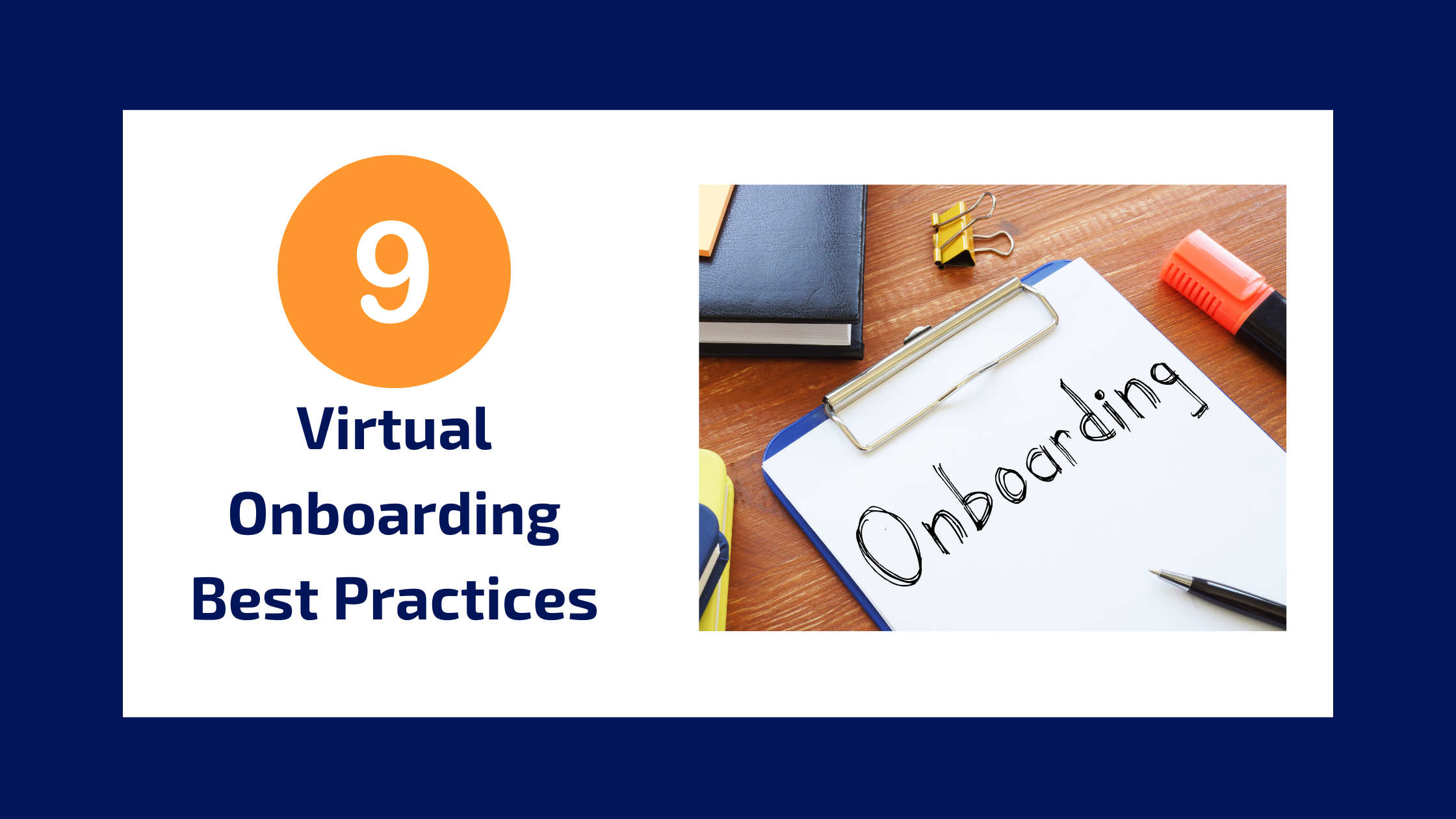Boost Retention with These 9 Virtual Onboarding Best Practices

As companies hire remote employees, including remote developers and techies, they need to onboard those new team members. In a remote setting, this is called virtual onboarding.
For many, onboarding is just introducing new employees to the team. But HR professionals know that onboarding, virtual or in-person, is more than that.
Research by the Brandon Hall Group shows a “strong onboarding process” can increase employee retention by up to 82% and productivity “by over 70.”
This applies to both virtual and in-person employee onboarding.
In this article, we’ll explain what virtual onboarding is and dive into the best practices for onboarding employees in virtually.
What is employee onboarding?
Onboarding is the essential process of integrating new staff members into an organization. It helps them understand the company's culture, policies, and guidelines.
Through employee onboarding, companies aim to turn new employees into productive and valuable team members.
What is a virtual onboarding process?
Virtual onboarding is a digital process that connects new employees to an organization using virtual tools and technology.
It includes video meetings, webinars, virtual tours, digital document signing, and access to online training and resources.
The best virtual onboarding processes also include legal and financial onboarding. More on those below.
Why is employee onboarding important? (Virtual or in-person)
When companies create virtual or in-person employee onboarding processes, they benefit in multiple ways.
The onboarding process serves both the company and the new hire.
Here’s how companies benefit from an effective in-person or virtual onboarding process:
- Increases employee retention
- Improves employee engagement
- Builds trust between new hires, old team members, and managers
- Improves and speeds up internal communications
- Offers a positive employee experience
- Contributes to improving your employer branding
Virtual onboarding best practices
The following virtual onboarding best practices go beyond the basics to create a positive experience that quickly integrates new employees and boosts retention.
For a successful onboarding process, it’s best to apply as many of these best practices as possible.
Start your virtual onboarding process early
Your onboarding shouldn’t begin on the day the new hire starts working for you. It should begin much earlier. When they sign their contract with you.
For example, you can send new team members a welcome packet as soon as you complete the hiring process.
This packet should include an e-copy of the company or HR handbook, onboarding agenda, company swag, important HR documents to sign, and something fun for their remote office.
As a hiring manager, send your new employee an email introducing them to the team and other members.
Legal onboarding
Another essential best practice for virtually onboarding employees is managing the legal onboarding process.
Legal onboarding involves collecting relevant legal and employee-related documents, verifying them, and providing relevant services.
For example, legal onboarding may involve getting virtual copies of your employee’s birth certificate, identification card (ID), or passport.
Legal onboarding helps companies deduct or pay employee taxes in countries where they’re not based.

Financial onboarding
One of the most important virtual onboarding process best practices is to provide financial onboarding. This involves managing bank accounts and salary transactions for your employees.
The process is often hard when employees work in a different country or region.
Working with recruitment and onboarding software like TechieMatter facilitates and speeds up the process of setting up bank accounts and sending monthly payments.
Offer virtual training via online videos
Create short online training videos to help your new team members and introduce them to your workflow and processes. Keep videos short and organized in a shared folder.
Start with a ‘Welcome’ video, introduce the process, and explain what's expected of them.
Include instructions for using any tools mentioned in the video.
These virtual onboarding videos will be a valuable resource for any new hires to your team.
Share your onboarding agenda early
Send new hires an agenda containing their onboarding schedule for the first two weeks.
This helps them adjust to their new remote schedule and easily integrate with your team.
Add this agenda to a Google Doc or project management tool and share it with your new hire to help them familiarize themselves with the tools your company and team uses.
Provide access to software
Share your team’s communication and project management tools and create accounts for the new hire. This keeps everyone informed, avoids confusion and ensures projects stay on schedule.
If needed, train new team members on how to use these tools with brief walkthroughs of specific features and usage. If they’re familiar with the tools, give them a quick rundown of how your team uses the tools.
For example, many companies use Slack to communicate and set up private spaces and reminders. Show new team members what they need to communicate with you, the hiring manager, other team members, and, if needed, HR or other stakeholders.
Train your team leaders/managers to follow this process
Managers and team leaders have a big impact on a new employee's experience. But not all managers know how to welcome a worker remotely.
To address this, ensure managers are fully aware of the virtual onboarding process, its challenges, and these best practices.
Training your managers ensures a consistent and positive experience for every new hire. Involve experienced managers in training by holding video calls or asking them to contribute to creating virtual training materials.

Create a face-to-face virtual introduction with the team
A video call with the whole team is a great way to welcome a new employee and help them get to know everyone. Introduce everyone and use this intro call as an icebreaker to help them find common ground.
Review current goals and projects and leave time for questions.
Offer an onboarding Buddy
One of our virtual onboarding best practices is to create or offer an onboarding buddy. This person functions as a "first friend" for new team members, facilitating their introduction to the rest of the team.
The onboarding buddy acts as a trusted person to whom they can turn for assistance, shows them the ropes, and is there if they get stuck or need help.
We recommend pairing your new employee with a staff member who has been on your team for some time.
How does TechieMatter help you with virtual onboarding?
TechieMatter not only helps companies hire and assess tech talents, but also acts as a global employer of record (EOR) service provider.
This means TechieMatter can help you manage the entire tech recruitment process from A to Z and beyond. From finding tech talents, to managing the contract process, to open bank accounts, to managing aspects of virtual onboarding like legal and financial onboarding among others.
As an EOR service provider, TechieMatter ensures all your legal, financial, labor, and tax paperwork is in compliance in the country you’re operating or hiring from.
If you’ve hired employees yourself but need to manage their legal and financial needs like compliance, payroll, and other HR services, you can do that through TechieMatter, too.
Conclusion
Follow these virtual onboarding best practices whether you’re recruiting tech talents or any type of talents to your company. They’ll help you welcome and integrate new hires into your team faster.
It also helps you speed up employee-related processes like new-hire paperwork, opening or managing bank accounts, among others.
Need help hiring tech talents and managing financial and legal onboarding for them? Already have talents but need to manage their financial and legal onboarding, get in touch with TechieMatter and consider it done!


